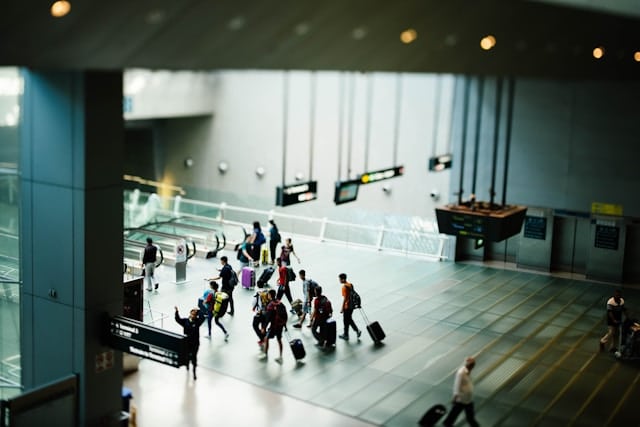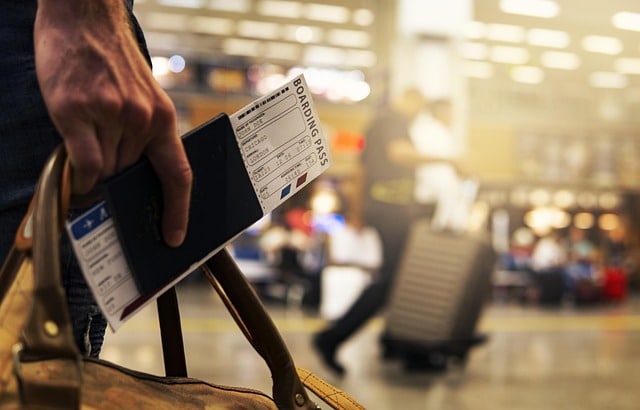
The period between a flight’s touchdown and ground transportation departure often becomes the most unpredictable leg of any journey. Savvy travelers know that scheduling airport transfers requires more than simply matching departure times to flight arrivals—it demands careful consideration of baggage claim procedures, customs bottlenecks, and terminal navigation. Mastering these variables transforms stressful connections into seamless transitions.
Public transit systems like the Edinburgh airport bus exemplify well-planned services that account for typical arrival patterns, with scheduled departures allowing sufficient time for passengers to clear the terminal. However, even the most efficient transport requires travelers to realistically assess how long airport formalities actually take before committing to specific connections.
How to Plan Airport Connection
 Source
Source
Deplaning Realities Versus Scheduled Times
Airlines publish arrival times for wheels-down, not gate arrival. Large aircraft may require ten minutes just to taxi after landing. Passengers seated at the rear could wait another fifteen minutes to disembark. These hidden delays accumulate before you’ve even entered the terminal proper, potentially jeopardizing tight transfer plans.
International Arrival Complexities
Clearing immigration and customs defies precise scheduling. Peak periods at major airports may involve hour-long queues, while subsequent baggage retrieval adds unpredictable variables. Smart travelers build contingency time when booking post-flight transportation, particularly when using non-flexible options with strict departure cutoffs.
Terminal Geography Matters
Mega-hubs with multiple concourses demand substantial walking time between gates and ground transport. Heathrow’s Terminal 5 to Underground station trek exemplifies how architectural scale impacts transfer durations. Researching terminal layouts prevents unrealistic assumptions about quick exits.
Luggage Variables
 Source
Source
Checked baggage introduces significant timing uncertainty. First bags typically appear within 20 minutes of landing, but final items may take twice as long. Carry-on-only travelers gain a substantial advantage when making tight connections, especially when utilizing shared transport with fixed schedules.
Weather and Seasonality
Winter storms delay baggage handling operations. Summer tourist surges overwhelm immigration staff. Seasonal factors should influence how much buffer time you allocate between flight arrival and booked transportation. Savvy travelers adjust expectations based on historical airport performance data during specific periods.
Get inspired:
Transport Type Considerations
Private transfers wait, within limits. Scheduled services like trains or airport buses adhere to timetables. The Edinburgh airport bus system’s frequency accommodates typical arrival patterns, but last services impose hard deadlines that red-eye flights may risk missing without contingency planning.
Security Checkpoint Re-entry
 Source
Source
Connecting travelers requiring terminal changes often face repeated security screening. These queues move unpredictably, particularly when new shifts begin or during peak congestion. Building in ninety minutes for international-to-domestic transfers prevents stressful sprints.
Payment and Ticketing Delays
Transport options requiring on-site ticket purchases introduce additional variables. Long queues at airport rail stations or confused tourists fumbling with unfamiliar ticket machines can make pre-booked options significantly more reliable for time-sensitive travelers.
Special Assistance Requirements
Passengers needing wheelchair services or traveling with young children experience fundamentally different terminal transit times. These valuable services necessarily operate at different speeds than independent movement, requiring adjusted scheduling expectations.
The Buffer Zone Principle
Mastering airport connections requires acknowledging that fluid processes—from baggage handling to security screenings—rarely adhere to ideal timelines, so building in realistic buffers (50% extra for domestic arrivals, 100% for international) transforms what could be stressful sprints into seamless transitions that account for the inherent unpredictability of modern air travel.
